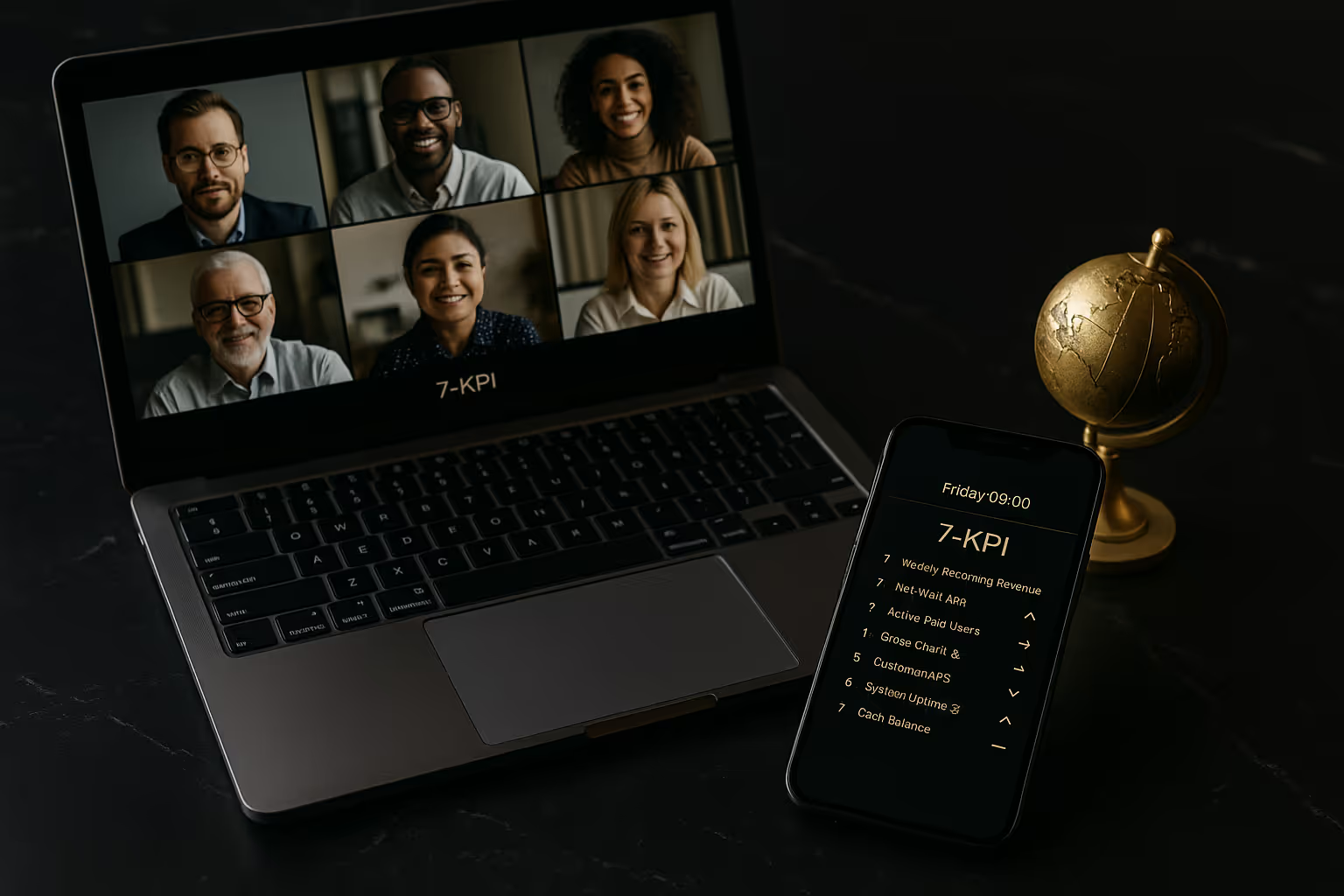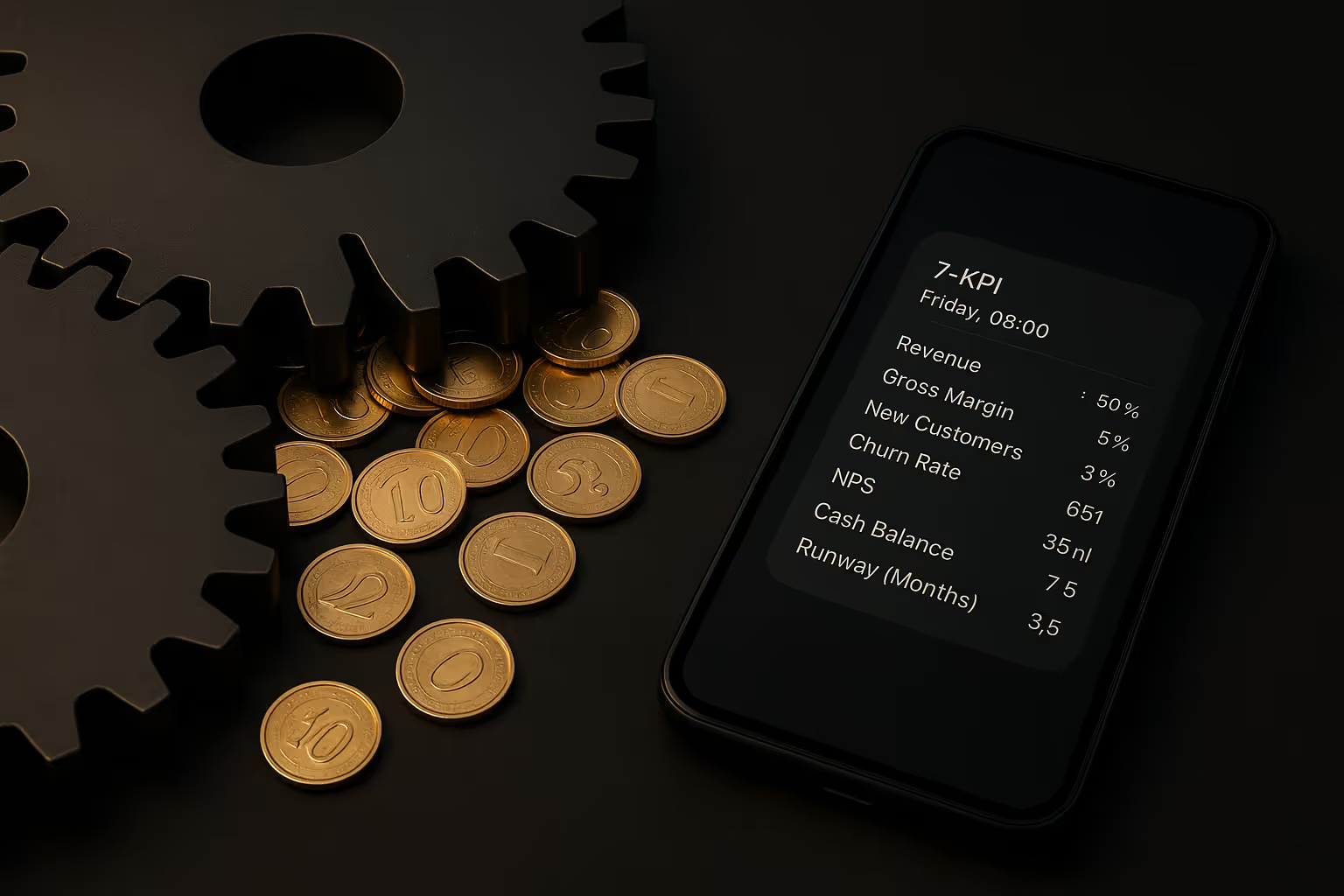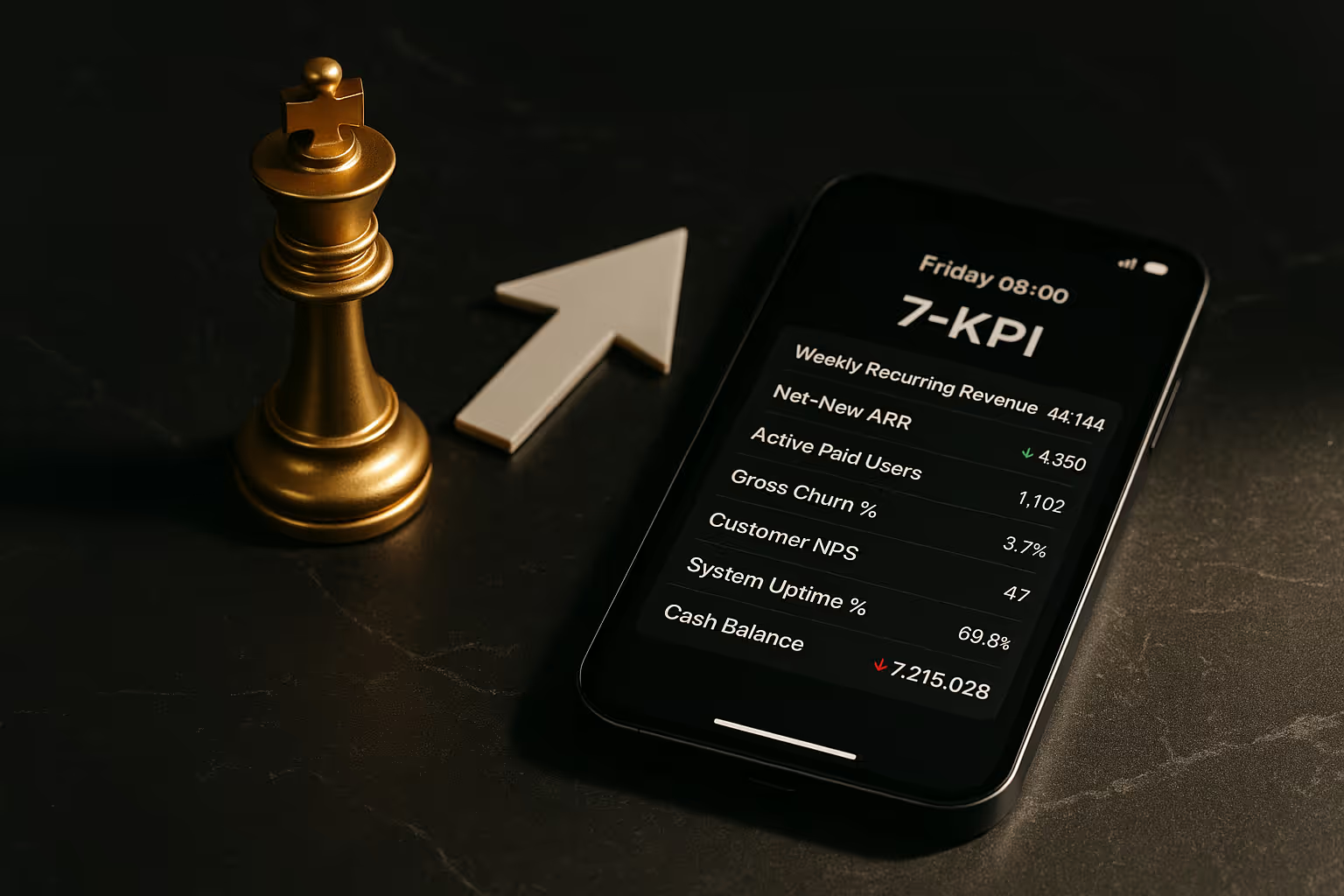KPI Alignment Playbook for Remote Teams

Introduction
Dashboards and Slack pings multiply faster in a remote company than in an office-based one. The result is an invisible drag: numbers scatter, meetings drift, and focus blurs across time zones. Yet the most effective distributed companies run tighter than many co-located teams—because they enforce a lean, ritualized KPI cadence. That approach echoes a recent Harvard Business Review study, which found that regular goal-alignment check-ins outperform intrusive monitoring for remote productivity and engagement. Below is a five-step playbook that has kept teams from San Francisco to Singapore aligned on the same seven numbers. Try it and watch the noise fade.
Design a Remote-First KPI Stack
Remote work lives or dies on system design. Before you pick metrics, pick where they live.
- Single source of truth: a cloud database or BI view every owner can access—no local Excel files.
- Communication layer: low-bandwidth channels such as SMS or lightweight push notifications; they cut through Slack chatter.
- Audit archive: a read-only folder (e.g., Google Drive “KPI-history”) for investors and auditors.
When everyone trusts the same dataset, distance stops mattering.
Lock Your Seven North-Star KPIs
Remote brains battle distraction harder than office teams, so limit the CEO dashboard to seven metrics. Ask: “If these seven moved in the right direction every week, would the business win?” Keep each KPI plain-language and lag-metric focused—let teams choose their own lead metrics beneath.
Example 7-KPI set for a global SaaS firm
- Weekly Recurring Revenue
- Net-New ARR
- Active Paid Users
- Gross Churn %
- Customer NPS
- System Uptime %
- Cash Balance
Everything else is a supporting metric that rolls up to one of these.
Assign Single Owners Across Time Zones
Accountability evaporates when a metric spans two continents. Give one name to each KPI, then align update deadlines with that person’s local Thursday 18:00.
- Revenue: CFO (CET) updates by Thu 18:00 CET.
- NPS: CX Lead (EST) updates by Thu 18:00 EST.
Local deadlines stop people from doing mental math—or worse, missing the window because it landed at 02:00.
Automate Reminders and Escalation
Manually chasing updates breaks down fast when the team spans twelve time zones. Set up an auto-nudge flow:
- T-2 h – Friendly SMS: “Churn KPI due in two hours 🚀.”
- T+1 h – Slack mention in #kpi-reminders.
- T+3 h – Escalation ping to the owner’s manager.
When people know the robot will keep knocking, they update on time—and no human becomes “KPI police.”
Ship the Friday 08:00 TXT, Then a 15-Minute Monday Huddle
- Friday 08:00 (CEO local) – The seven-KPI SMS lands with trend arrows.
- Weekend – Incubation period; ideas simmer while brains are relaxed.
- Monday 15-minute video huddle – Each owner states one micro-action they’ll take this week. Cameras on, slides off—decisions only.
This cadence preserves weekends, sets Monday momentum, and respects remote attention spans.
Common Remote Alignment Pitfalls & Fast Fixes
- “I didn’t know the deadline in my zone.”
Add the local deadline right next to the KPI label inside the dashboard. - Data lives in three regional tools.
Centralise via a lightweight warehouse or nightly API export; ban emailed CSVs. - Slack noise buries KPI reminders.
Create a #seven-kpi channel where only the bot posts; pin it for all hands.
Tool Short-List That Just Works
- Airtable (or Baserow) – Simple cloud table with API; perfect for seven high-level KPIs.
- ClickSend – Global SMS gateway with delivery receipts.
- Loom – Drop 90-second async video context right inside the KPI row—beats extra calls.
- CEOTXT – Combines SMS delivery, owner nudges, and trend arrows in one turnkey layer.
Pick one tool per function; redundancy is the enemy of remote clarity.
Reflection: Why This System Scales
Distributed teams can feel “out of sight, out of mind,” but data unites them—when it’s scarce and rhythmic. Seven KPIs honour the brain’s capacity; weekly cadence keeps the flywheel spinning; local ownership rescues accountability from time-zone chaos. Once these elements click, remote feels lighter than co-location: fewer meetings, faster decisions, better weekends.
Conclusion
Distance shouldn’t dilute focus. With a disciplined, seven-metric ritual—nudged on schedule and delivered in one Friday TXT—your global workforce becomes a single, aligned organism.
Time is money—protect both, from San Francisco to Singapore.

Remote teams should have clear, documented KPIs linked to strategy, visible ownership for each metric, and regular asynchronous updates. Weekly reporting tools like CEOTXT help maintain alignment without adding meeting overload.

Weekly reviews prevent drift, surface issues early, and keep everyone connected to the strategy. This is even more important for remote teams where informal check-ins don’t happen naturally.

Without in-person interactions, it’s easier for teams to drift away from company priorities. Communication gaps can allow misaligned KPIs to persist unnoticed. Remote teams need stronger, more deliberate alignment processes to stay on track.




